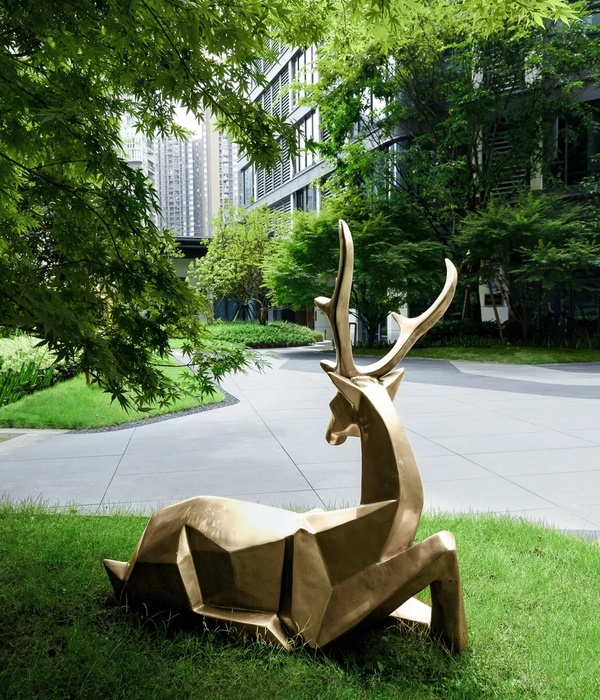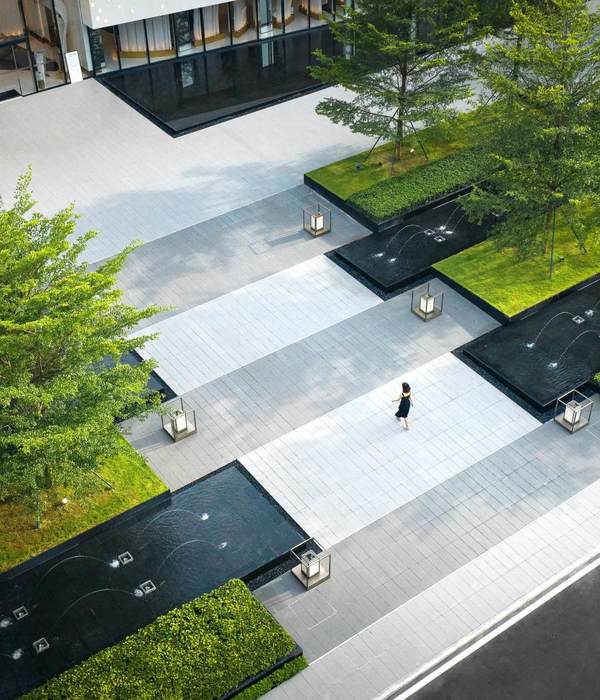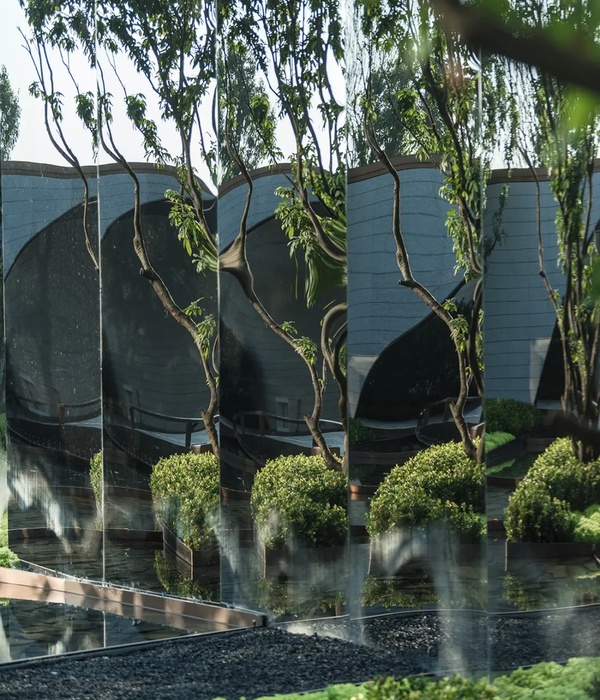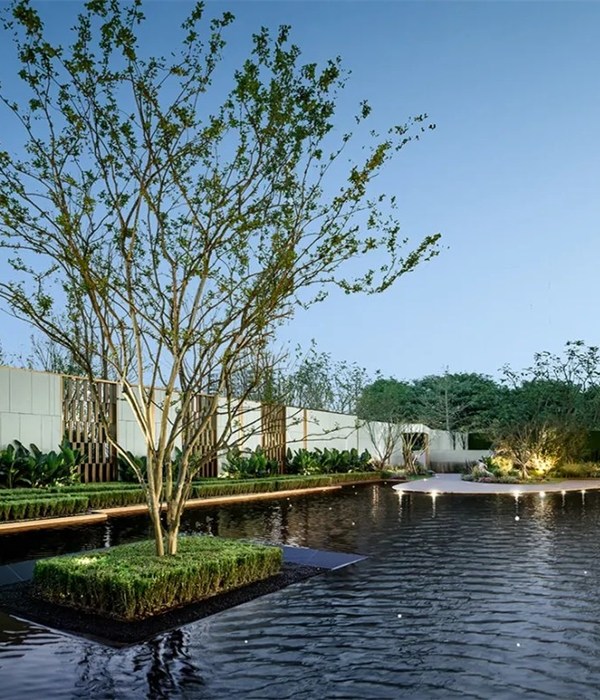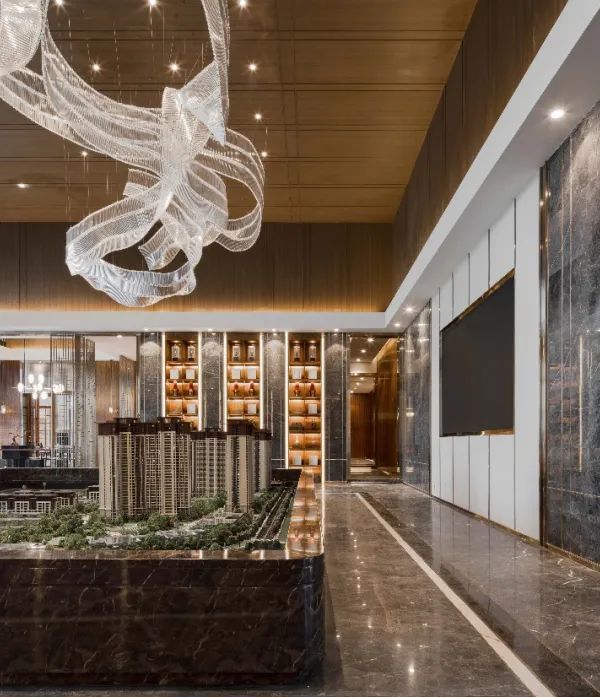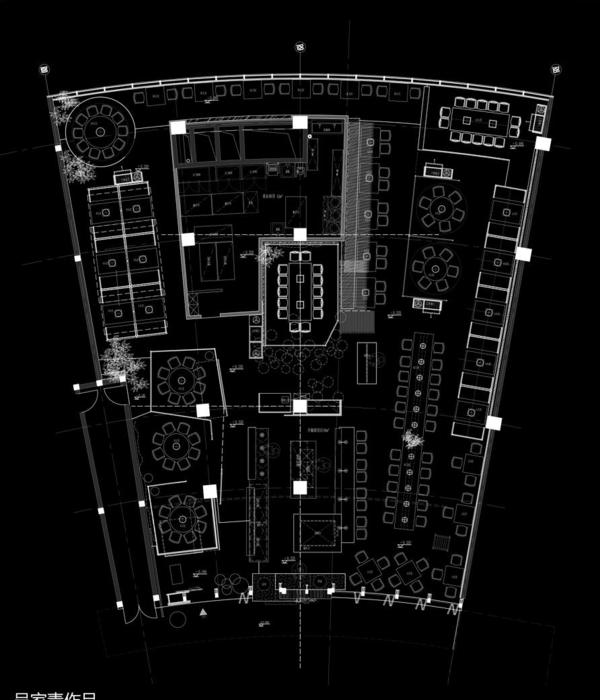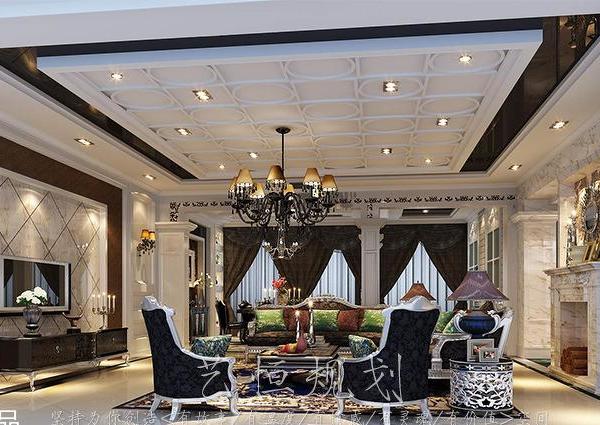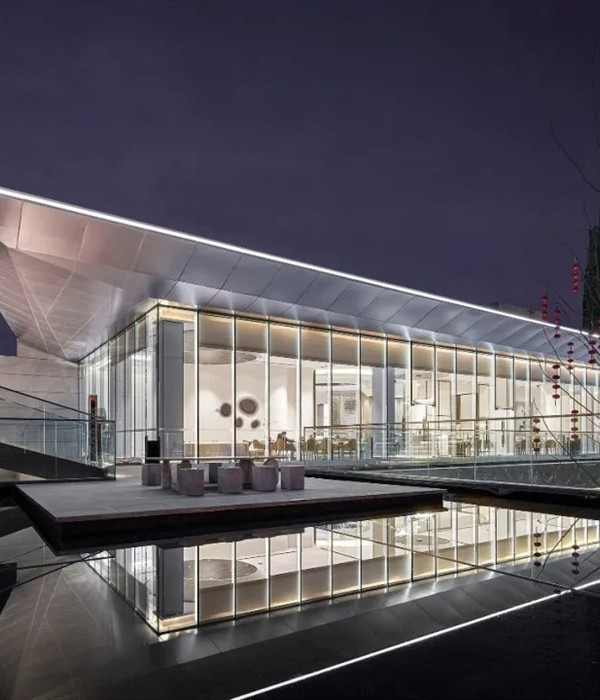战争废墟中的“采矿&排雷”规划

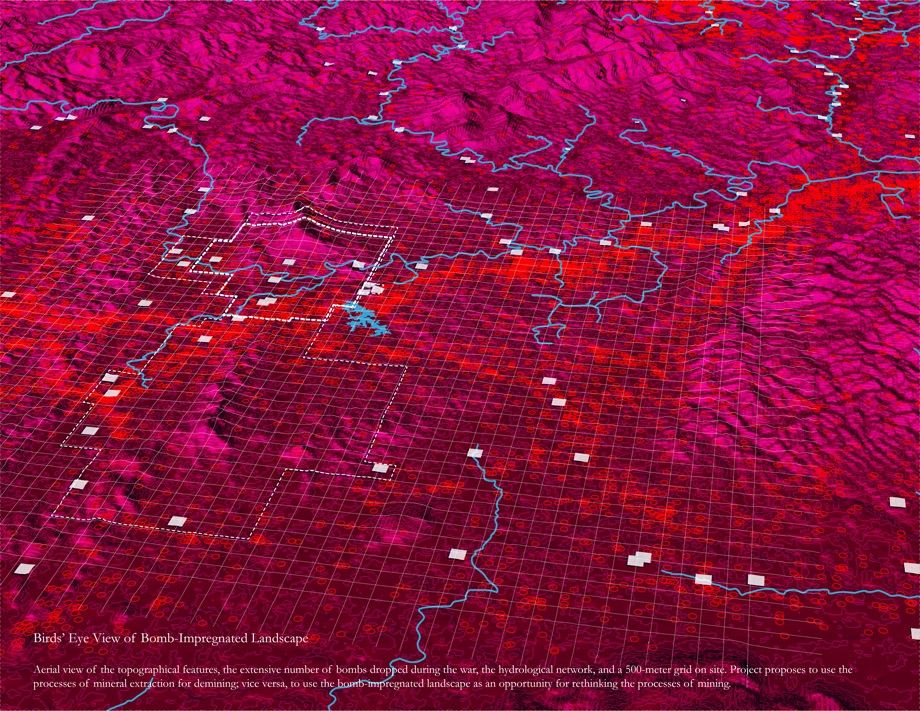
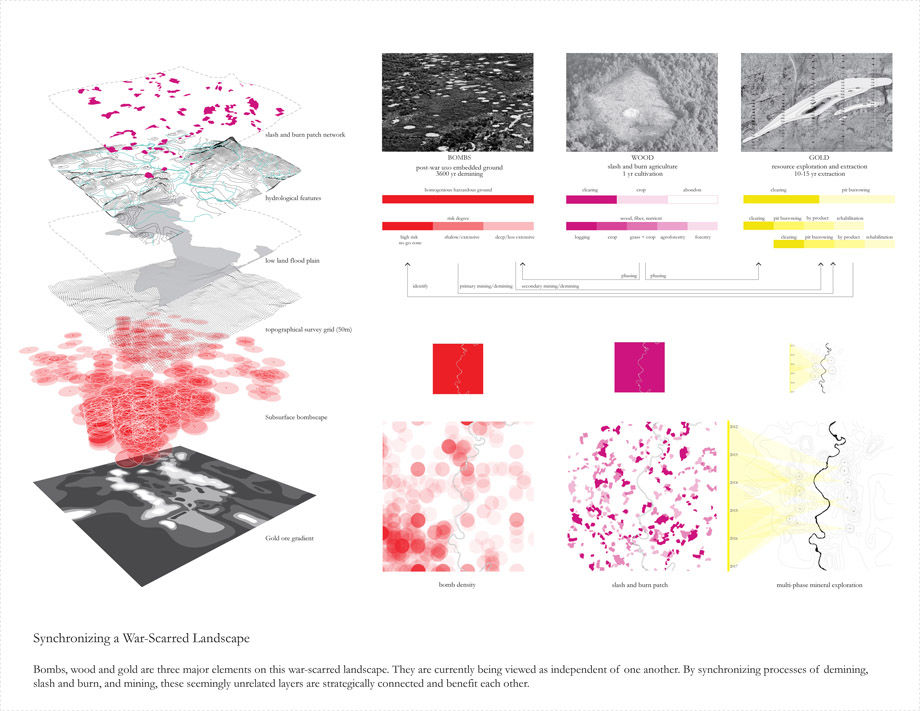
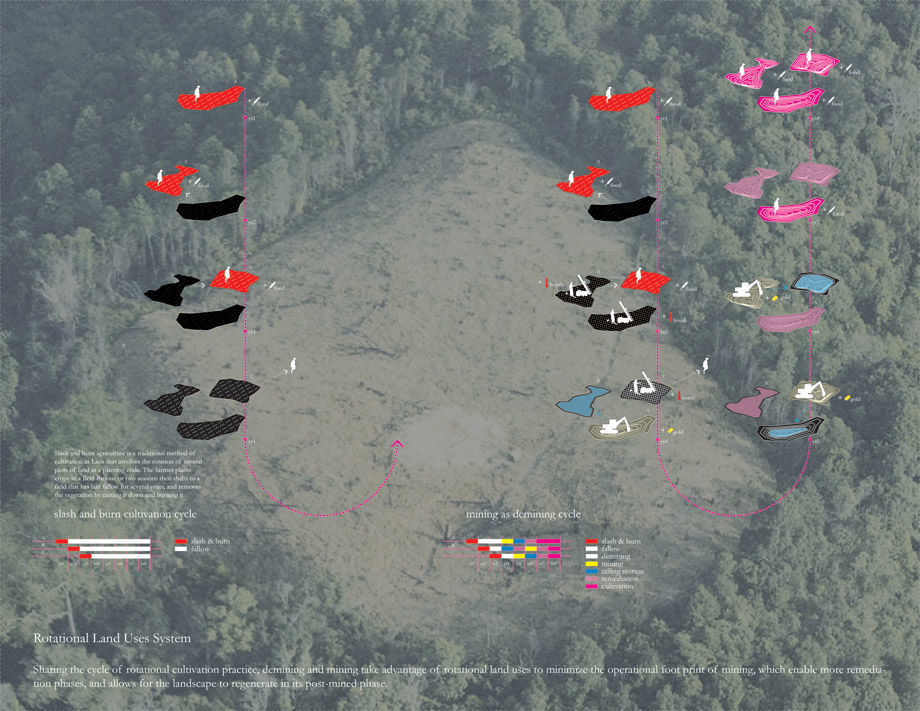
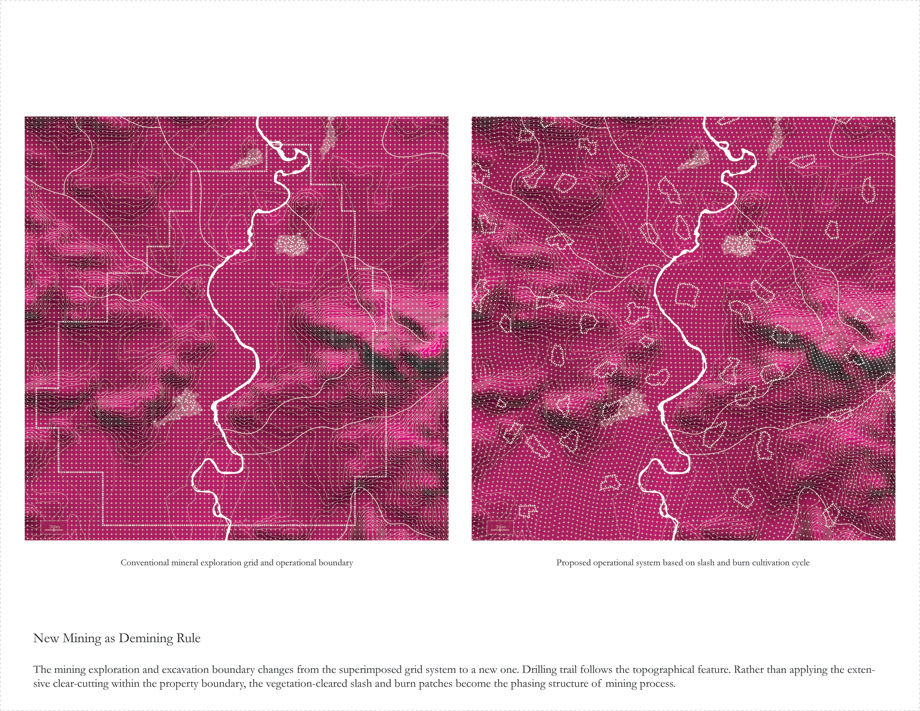
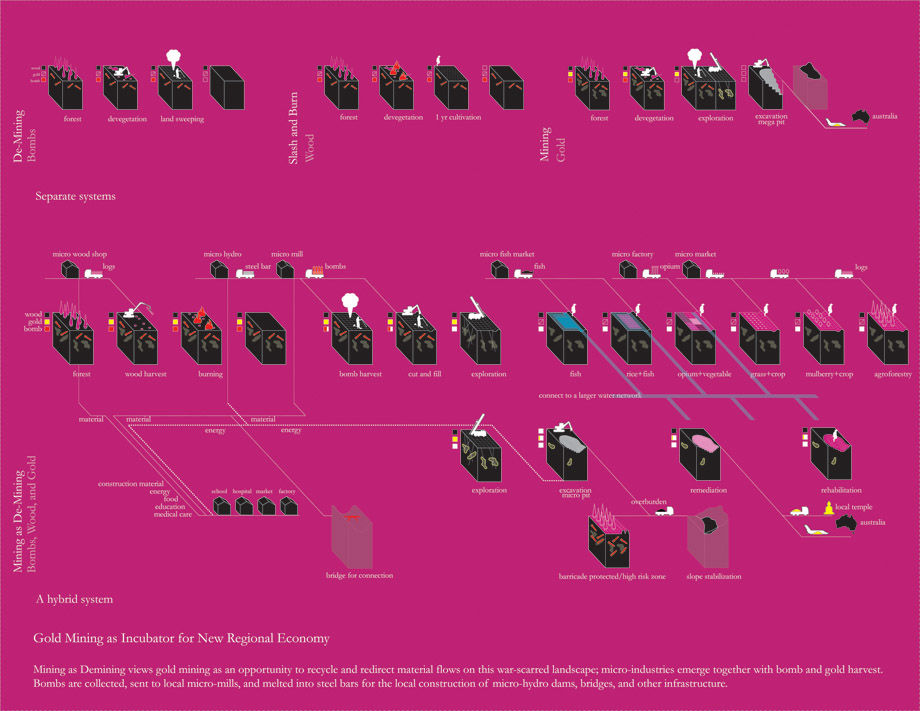

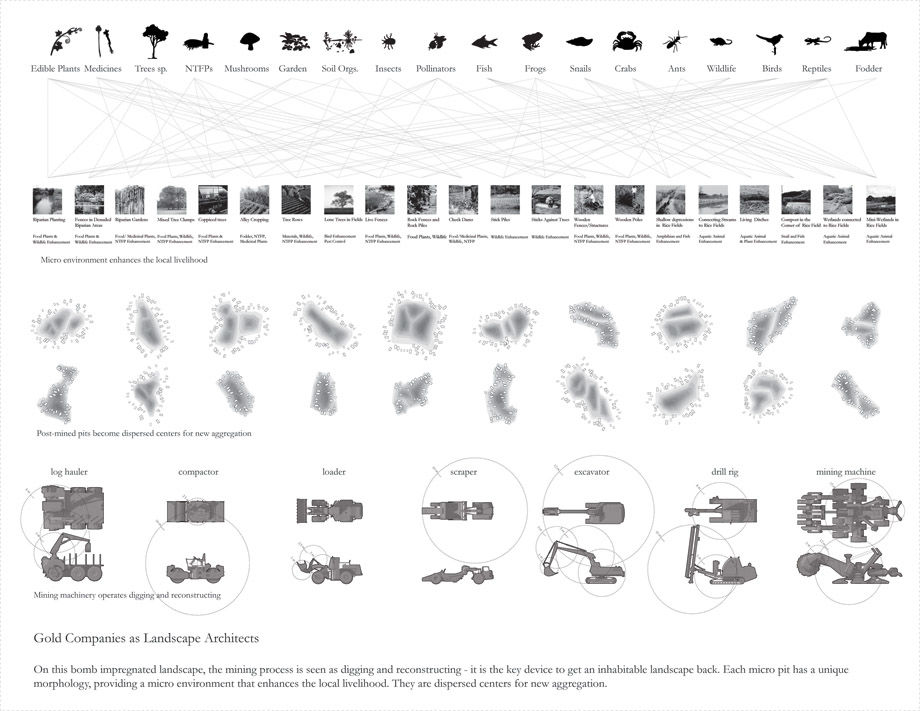
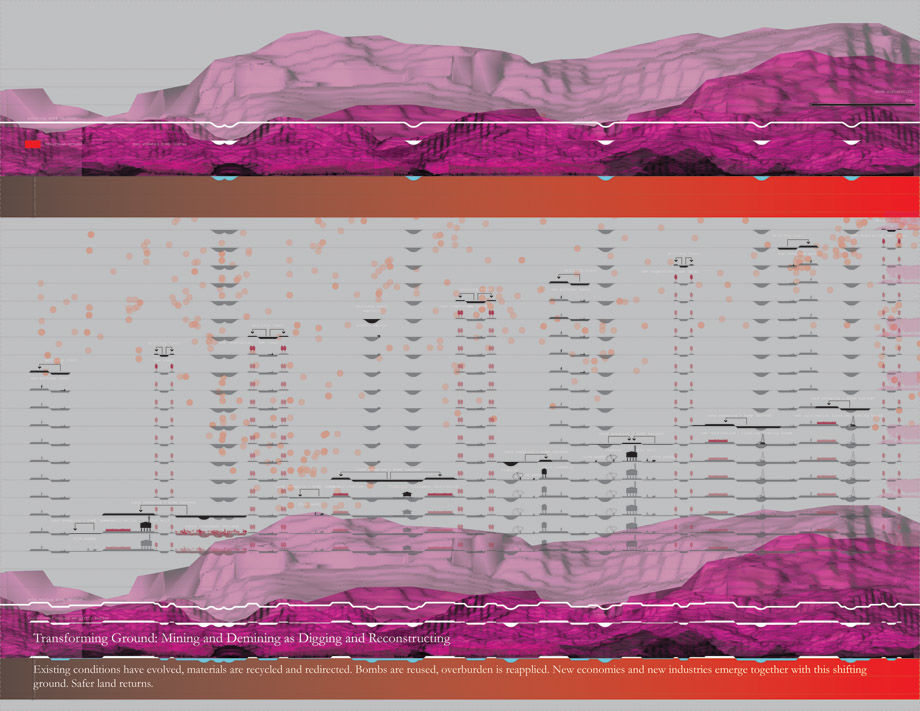
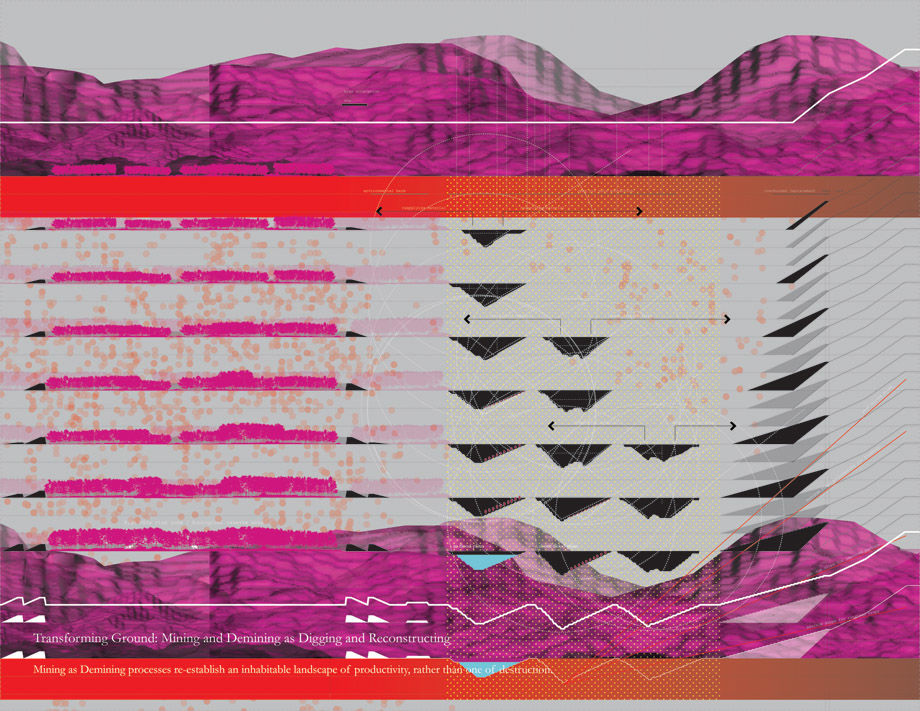
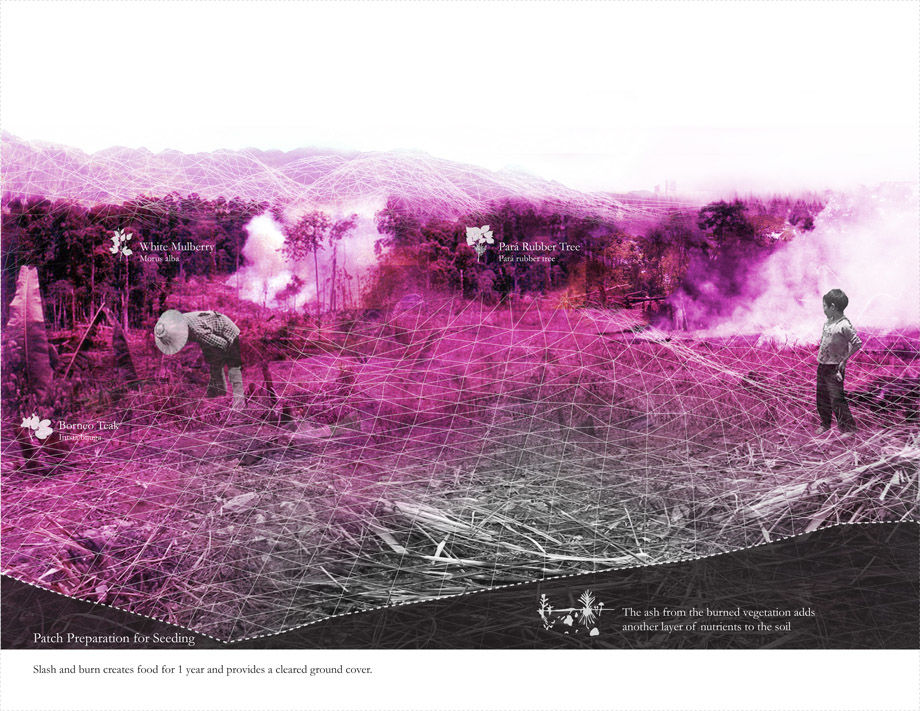
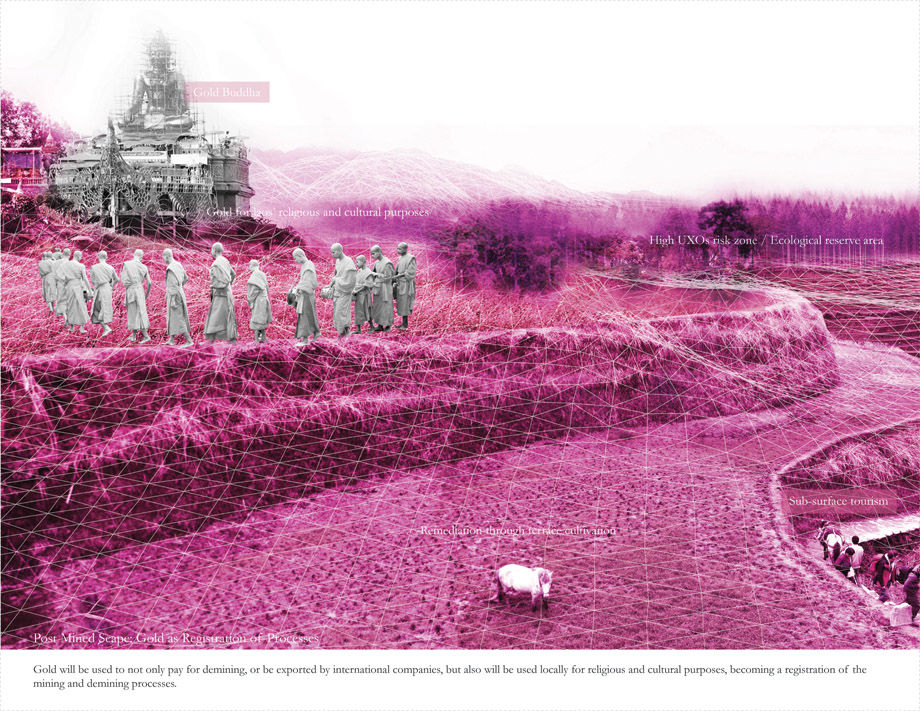
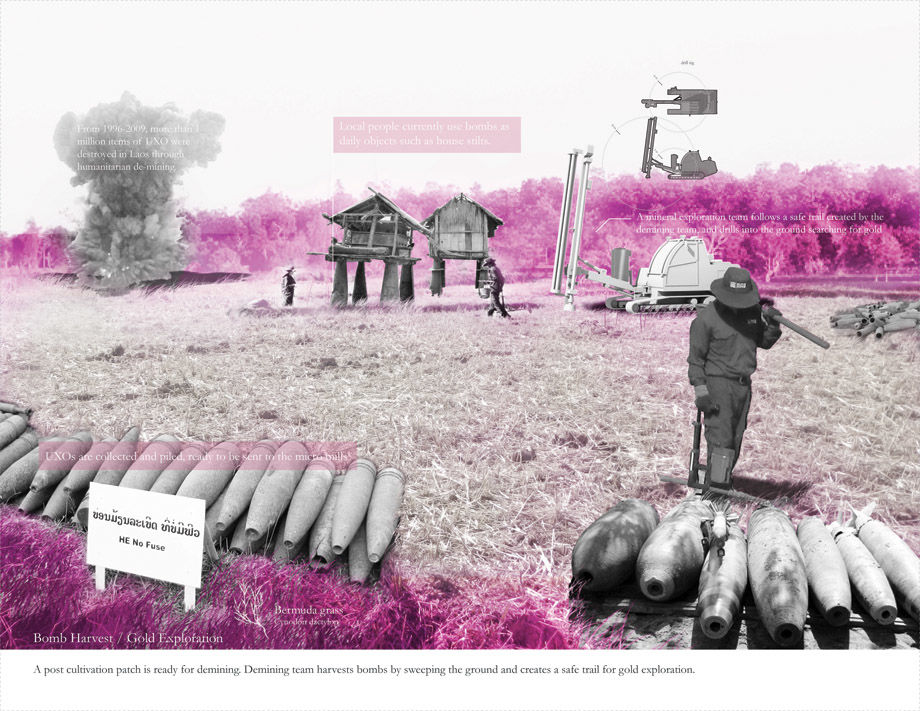
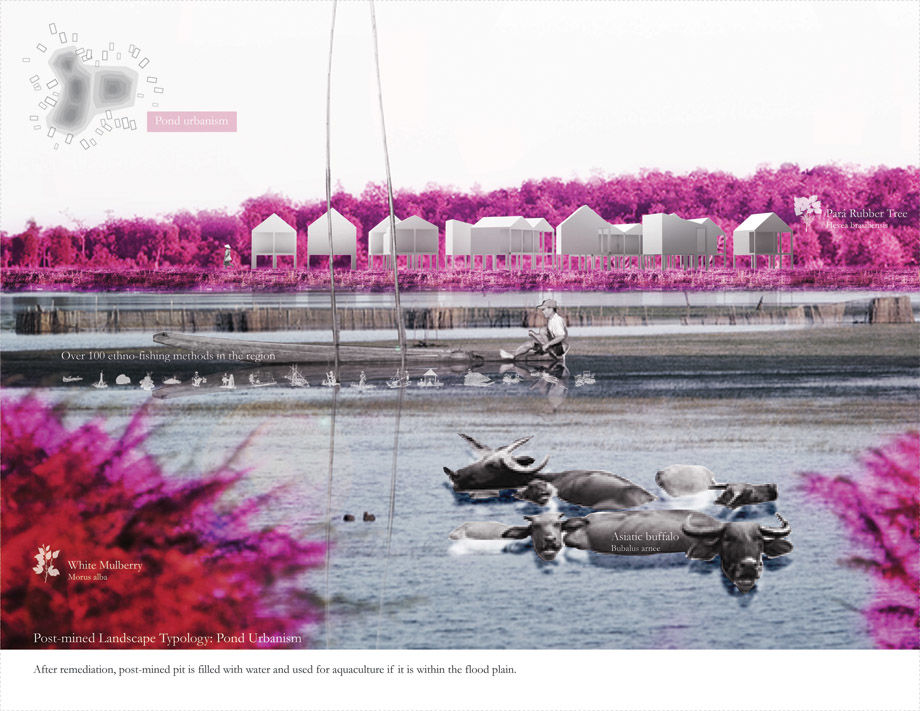

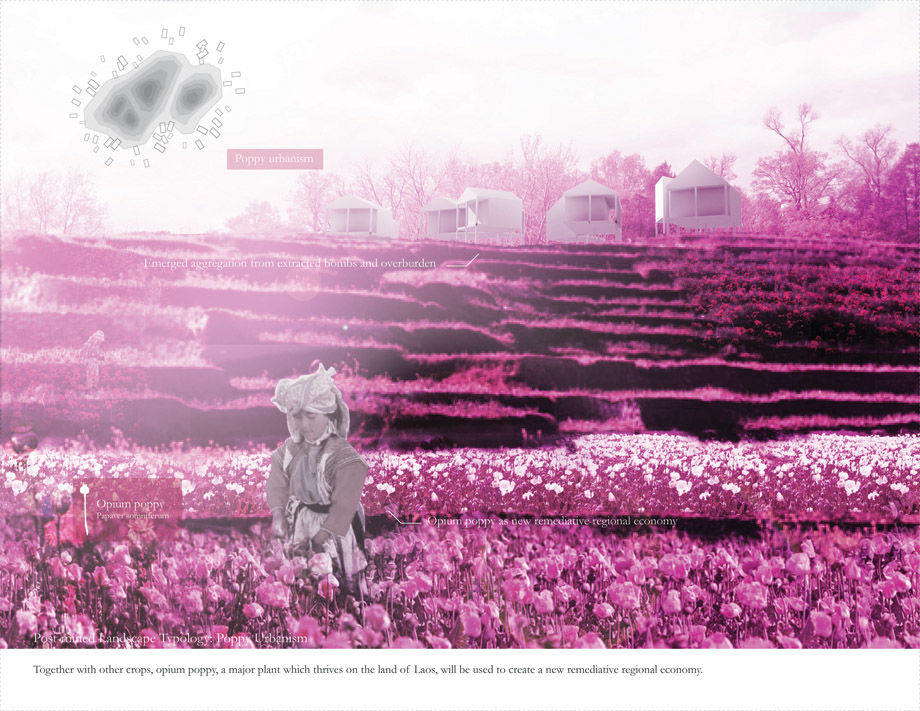
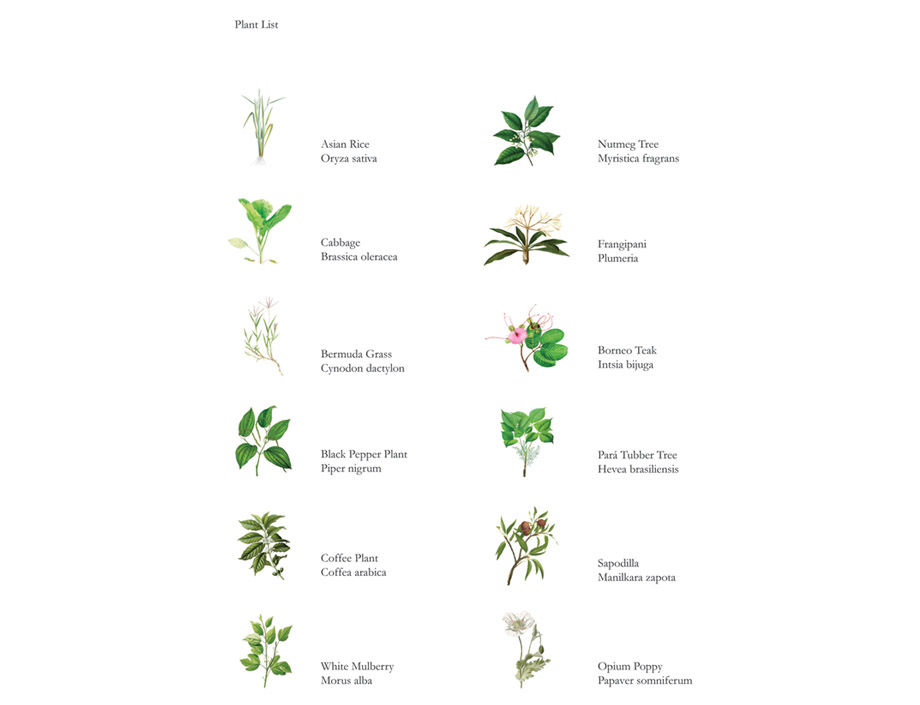
Here’s some more information from the Xiaoxuan Lu:
Project Narrative
Laos is the most bombed country in the world; 270 million bombs were dropped across its landscape during the Vietnam War, 30% of which failed to detonate, currently affecting 50% of agricultural land. Less than 1% of land affected by UXO has been cleared in the past 20 years. Based on the current clearance speed, it will take more than 3600 years to clean up all the unexploded bombs in Laos.
Not only does its land have the highest concentration of UXOs in the world, but it also has some of the richest gold ore concentrations per capita in the world. Due to the fact that Laos’ landscape is so heavily impregnated with unexploded ordinance, it wasn’t until very recently, that international mining companies began entering Laos to perform operations of mineral prospecting, exploration, and extraction. 270 million bombs trampled the land during the war time. Gold companies are now ready to trample the land again by using raw, unmitigated methods of exploitation. This project proposes the strategy of ‘demining bombs through mining gold.’ The bomb-impregnated landscape is seen as an opportunity to rethink the processes of mining. Simultaneously, gold exploration and excavation processes are used as mechanisms of rehabilitating and reconstructing the hazardous ground.
Demining and mining are largely considered to be a major factor of deforestation in Laos. Both processes require a clearing of ground vegetation for operations to begin. By strategically using the dispersive locations of unexploded bombs, coupled with the existing cycles of slash and burn cultivation, ‘Mining as Demining’ becomes characterized by a decentralized micro-scale operation. The migrating vegetation-cleared patches become the phasing structure of the mining process. Sharing the cycle of rotational cultivation practice, the operations take advantage of rotational land uses to minimize the operational foot print of mining, which enable more remediation phases, and also allows for the landscape to regenerate in its post-mined phase.
A new harvesting system emerges: bomb, gold, and food. Slash and burn creates food for 1 year and provides a cleared ground cover. After, a demining team harvests bombs by sweeping the ground and creates a safe trail for gold exploration. A micro pit is burrowed for harvesting gold. It is later used as tailing storage area during the operation of mining for a nearby patch. In the post- mining phase, if the patch’s location is within the flood plain, the pit will be flooded after remediation. Similar to those bomb craters created during the war, which have been transformed by local people into fish ponds for food, mining pits will hold water for new aquaculture. In comparison, pits above flood zone will be used for terrace cultivation—these pits will be created either during the mining operation to maximize the south-facing side or by re-sloping after the mining operation. Together with other crops, opium poppy, a major plant which thrives on the land of Laos, is used to create a new remediative regional economy.
‘Mining as Demining’ exploits gold mining companies as landscape architects. Rather than be seen as a major factor of environmental disturbance, mining processes are reconsidered. Not only are they used as bomb clearing devices, but are also re-conceived as ‘digging and reconstructing’, utilizing the by-product of mining processes – pits and overburden materials – as an opportunity to reshape the war-disturbed landscape.
For example, extremely dangerous areas, which are too arduous for bomb removal through humanitarian land sweeping demining processes, are indicated as high risk-dangerous zones by using the overburden to create double berms that barricade it. Ironically, these bomb-protected islands will function as bio-conservation areas, prohibiting any further human intervention. They are untouchable patches dispersed in this migrating landscape, indicating a history in forms of protected zones. The overburden is also used to build roads and berms that set up new aggregations around each micro-pit.
‘Mining as Demining’ re-envisions gold mining as an incubator for new economics. While the bombing operation during the war was an attempt to destroy the regional infrastructure, mining as demining sees gold mining as an incubator for bringing infrastructure back to the region and as a generator of an improved livelihood. Infrastructure, understood as a necessity for the mining operation, is constructed for connectivity and energy production, with amenities such as roads, plants and hydropower dams, as well as other basic civil institutions such as hospitals and schools. Rather than creating a single mega mining pit that requires heavy infrastructure, as typical mining operations have, mining as demining not only creates micro pits within the boundary of slash and burn patches, but it also recycles and redirects material flows; micro-industries emerge together with bomb and gold harvest. Bombs are collected, sent to local micro-mills, and melted into steel bars for the local construction of micro-hydro dams or bridges. Gold is used to not only pay for demining, or be exported by international companies, but is also used locally for religious and cultural purposes, becoming a registration of the mining and demining processes.
The project poses a new linkage between resource extraction and post-war metal cycling economies, strengthening a livelihood that heals the war-scarred landscape. Existing conditions have evolved, materials are recycled and redirected. Bombs are reused, overburden is reapplied. New economies and new industries emerge together with this shifting ground. Safer land returns. These processes re-establish an inhabitable landscape of productivity, rather than one of destruction.
MORE:
陆小璇
Xiaoxuan Lu
更多请至:


